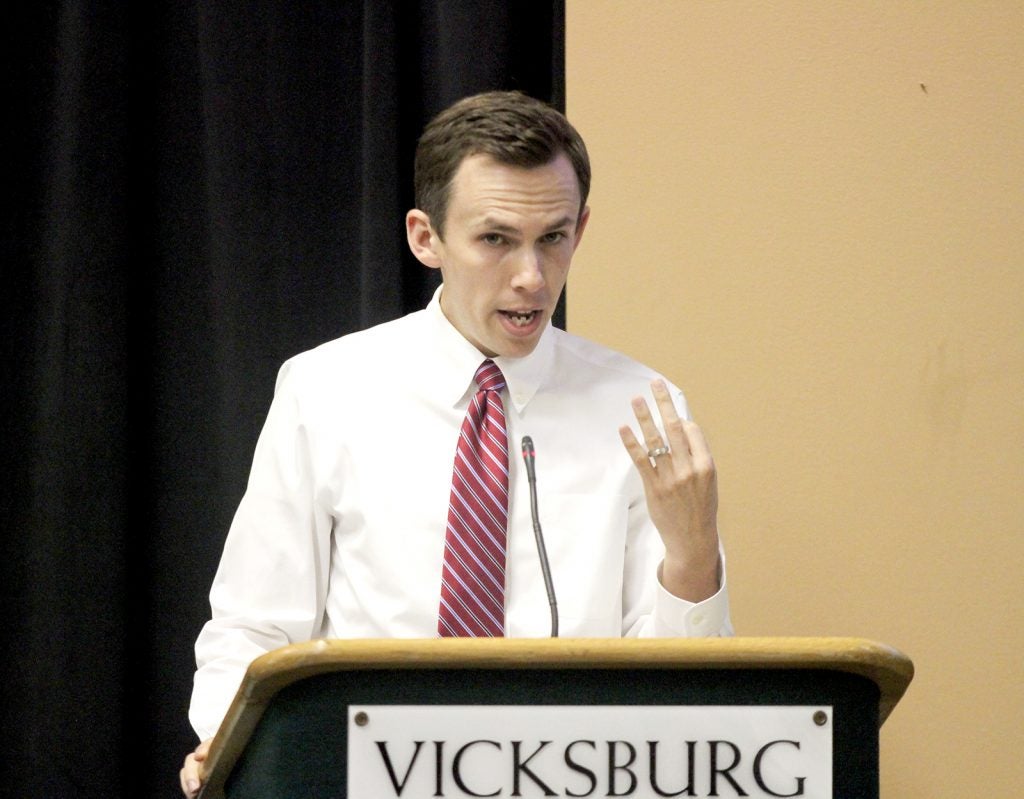Auditor questions state spending on public education
Published 4:57 pm Friday, April 19, 2019

- State Auditor Shad White speaks during the monthly Chamber of Commerce Luncheon at the Vicksburg Convention Center Wednesday. (Courtland Wells/The Vicksburg Post)
If the number of K-12 students and classroom teachers has decreased in Mississippi over the last decade, then why is statewide spending for school administration and non-instructional activities increasing?
Mississippi State Auditor Shad White posed that question this week after he released a report showing the spending increases.
If outside-the-classroom spending had remained the same per student for the last decade, Mississippi could have had more than $358 million to dedicate to spending in the classroom—enough for an $11,000 teacher pay raise, White’s report suggested.
“As the product of our public schools, the son of a retired public school teacher, and the grandson of two public school teachers, the issue of how we spend education dollars is incredibly important to me,” White said. “Education policymakers need to take a careful look at where our money is going, and they should explain why outside-the-classroom spending is growing so much.”
Through a months-long analysis of data from the Mississippi Department of Education, auditors found overall K-12 spending increased in Mississippi over the last 10 years, but instructional costs increased more slowly than any other part of K-12 spending.
At the same time, Mississippi has seen a decline in K-12 student enrollment. If outside-the-classroom spending had decreased at the same rate as enrollment, Mississippi would spend $358 million less on outside-the-classroom costs than what the state spends today.
This amount is equivalent, White said, to an $11,000 teacher pay raise. If outside-the-classroom spending had simply been kept the same over the last 10 years, it would have yielded enough savings to fund for a $9,000 raise.
“Common sense says that money spent on a high quality teacher is the best way to use education funds. When money is spent on administrative costs, outside the classroom, we lose the chance to spend that money on teachers,” White said. “In Mississippi, we can’t afford to waste a single dollar on administrative costs when that money could be going to teachers.”
While administrative costs have increased by 18 percent over the last 10 years, the number of teachers has decreased by 8 percent.
Some of the outside-the-classroom spending accounts with the largest increases include administrative staff services (increased cost of 113 percent and includes operations, recruiting, training, and accounting) and information services (103 percent increase and includes costs for producing “educational and administrative information” for students, staff, managers, and the general public).





